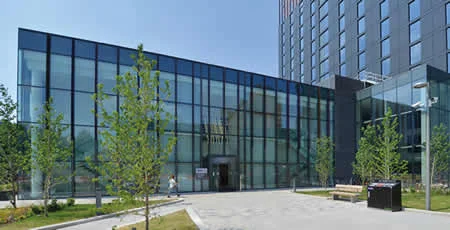Rethinking Executive Education
As the world rapidly evolves, so too must the way we prepare leaders, says Ian Crowther.
Executive Education is shifting beyond workshops and the practical 'Manchester Method' to embrace immersive experiences, systems thinking, and approaches that extend learning beyond the classroom.
For business schools the challenge is to combine time-tested methods with innovations that help leaders navigate complexity, test ideas, and embed learning that drives meaningful impact.
Rethinking complexity
Senior leaders now face what systems theorists call dynamically complex problems - challenges with no clear solution. Cause and effect are separated by time and space, and actions in one area can ripple unpredictably through others.
Traditional approaches may no longer suffice.
Systems thinking offers a broader lens, enabling leaders to identify patterns, anticipate unintended consequences, and make decisions with a deeper understanding of interdependence.
Our programmes increasingly integrate these perspectives, encouraging participants to:
- Challenge assumptions
- Map stakeholder dynamics
- Explore how minor actions can create significant organisational effects.
Systems thinking enriches strategic analysis and complements classroom-based learning.
Learning by immersion
If systems thinking helps leaders understand complexity, immersive technologies help them experience it.
Virtual reality (VR), augmented reality (AR), and 'digital twins' are becoming central to a new learning model that is emotionally engaging and intellectually rigorous.
VR offers vivid, visceral learning. In one simulation we run, leaders are placed in a high-pressure scenario where rapid, collaborative decisions are needed. The emotional intensity of the environment deepens the learning beyond what written case studies can offer, fostering knowledge and judgement.
AR brings similar benefits to everyday settings, enabling role play, visualisation, and interaction with digital content overlaid onto the physical world via mobile devices. This flexibility is especially valuable for senior leaders, who often need access to learning in real-world contexts, not just classrooms.
Digital twins are virtual models of real-world systems that update in real-time and allow leaders to test ideas without real-world risk. For instance, a digital twin of a supply chain enables experimentation with crisis responses, encouraging curiosity and refinement of mental models through active exploration.
Innovation in executive Education doesn’t require extravagant budgets. Some of the most effective strategies begin modestly.
Sustainable innovation in practice
Using an affordable VR headset, open-source simulation software or a pilot module can produce powerful results. The key is to test, learn, and iterate before scaling.
Blended learning models, combining online modules with immersive or in-person sessions, offer flexibility, reach, and cost efficiency. Immersive tech is most effective when used purposefully, simulating moments of uncertainty - while foundational content can be delivered digitally. This approach balances access with impact.
Partnerships further extend capabilities. Off-the-shelf simulations, shared digital environments, and collaborations with tech providers reduce cost and development time.
At the same time, we're investing in our educators. We're training them to facilitate immersive learning, apply systems thinking, and support reflective practice, ensuring experiences are as sophisticated as the tools themselves.
For innovation to have lasting value, it must scale. A one-off simulation that impresses a single cohort is not enough.
From experiment to impact
For innovation to have lasting value, it must scale. A one-off simulation that impresses a single cohort is not enough.
Tools must be integrated into broader programme offerings, applied across modules and years, and delivered consistently. Once developed, digital content can be reused and adapted at low cost.
Impact must be measured on several levels, from participant feedback and behavioural change to shifts in organisational practice.
Immersive platforms generate data that offers valuable insight into how people think, decide, and act. We can use this information to refine programmes and demonstrate clear evidence of learning outcomes.
We are embedding continuous improvement into our development process. Feedback loops enable us to refine and evolve content based on real-world usage, turning innovation into an ongoing journey rather than a one-off initiative. The result is an adaptive learning ecosystem that delivers lasting value for leaders and their organisations.
Looking forward
Executive education must keep pace with the complexity and speed of modern business. Systems thinking and immersive learning offer powerful tools for this, fostering not only knowledge but also agility, empathy, and courage.
As we look to the future, our ambition is to lead in this space. By combining conceptual rigour with experiential depth and innovation with meaningful impact, we aim to prepare leaders for the future and the challenges they have yet to imagine.
Tags:




